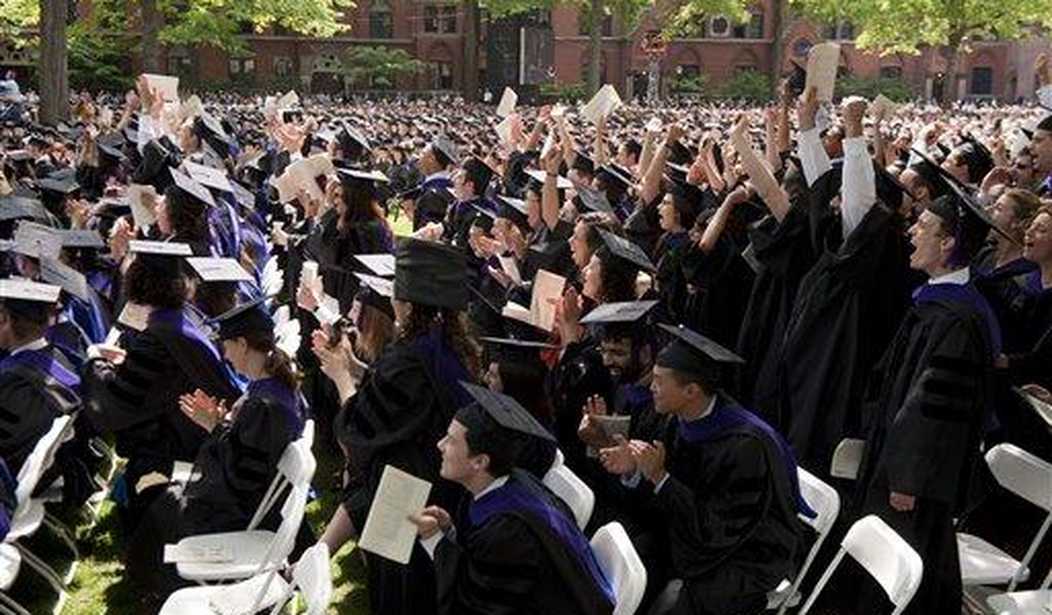Last month, President Biden issued an executive order to discharge the federally-backed student loans of qualified borrowers. But even though upwards of 43 million people will have their loans canceled, there is still no official cost estimate for this unilateral decision.
The Biden administration had been contemplating this action since 2020, so they should have been prepared to explain to taxpayers exactly how much it will cost. Fortunately, that doesn’t mean that we are clueless as to the fiscal impact, as other budget experts have filled in the gap with estimates.
Several watchdog organizations estimated that, at a minimum, Biden’s loan forgiveness will cost taxpayers from $360 billion to $427 billion. The Penn Wharton Budget Model is even less optimistic, estimating the cost to be in the range of $459 to $519 billion, and noting that dynamic responses to changes still to come in income-driven repayment programs could push the total cost over $1 trillion. When Congress passed the Inflation Reduction Act, the White House touted $238 billion in “deficit reduction.” The student loan scheme would increase the deficit by almost four times that amount.
To put this into context, at $1 trillion, this could cost $6,300 per taxpayer. But the burden of this action won't fall directly on today's taxpayers. Instead, the loan debt will be shifted over to the federal debt and passed onto future generations of taxpayers.
These estimates have caused a lot of sticker shock. How could this be so expensive? After all, official estimates from the Education Department claimed that the Direct Loans issued over the past 25 years would generate $114 billion in revenues for the federal government.
Recommended
Unfortunately, that’s because the federal government uses a faulty method to track the budgetary impact of loan programs. Politicians often treat the government like a bank, but do not practice the same diligence to protect the bottom line that private sector banks do when they issue loans.
In the month before the loans were canceled, the Government Accountability Office (GAO) released a comprehensive analysis of the costs of the Direct Loan program for students. GAO found that instead of a deficit-reduction windfall, the loans over the past 25 years actually cost the government $197 billion.
Nearly 40 percent of that cost swing resulted from programmatic changes, as Congress enacted carve outs and exceptions to the repayment of student loans. For example, deferments for people in the military, loan cancellation for teachers and those in public service, and income-based payments all reduced expected payments from borrowers.
The rest of the difference results from re-estimates based on newer assumptions and data. Essentially, the government made faulty assumptions about borrower behavior over the lifetime of the loans.
Sadly, this bad accounting also occurs for other loan programs. Through the Fair Credit Reform Act of 1990 (FCRA), Congress requires that the government assess the risk of loans based on the projected yields of Treasury securities with the same term to maturity. This method underestimates the value of loans or guarantees because it does not accurately consider the market risk of loans, which of course have a far higher chance of default than the United States government.
An alternative method called fair-value accounting creates estimates based on the market rate of interest that a private entity would have to pay. Fair-value accounting does a better job of incorporating the risk of defaults.
The Congressional Budget Office (CBO) annually re-evaluates federal credit programs to compare the two methods, each resulting in vastly different estimates. CBO found that using the FCRA method, all of the loans and guarantees issued this year will result in savings of $41 billion. But through the lens of the more realistic fair-value accounting, CBO projects net liabilities of $51 billion — a $92 billion swing.
Lawmakers should enact fair-value accounting reform for scoring loan and credit activities to use the same method used by the private sector. Representative Ralph Norman’s (R-SC) Fair Value Accounting and Budget Act, H.R. 3785, would make this the standard. This would shed light on the true risk of the loans and provide more accurate budget data.
Good policymaking is far more difficult when budget watchdogs are forced to use inaccurate assumptions. Congress should not allow itself to pretend that the student loan program is profitable for taxpayers — particularly when the president can introduce debt forgiveness curveballs at any given moment.
Demian Brady is the Vice President of Research at the National Taxpayers Union Foundation, a nonprofit dedicated to tax policy research and education at all levels of government.

























Join the conversation as a VIP Member